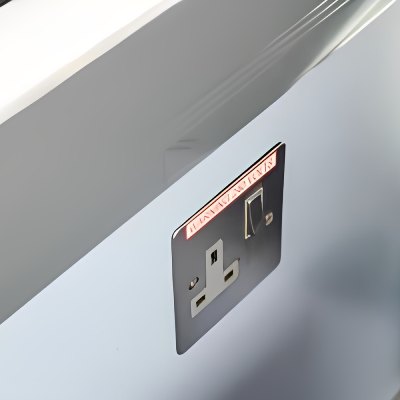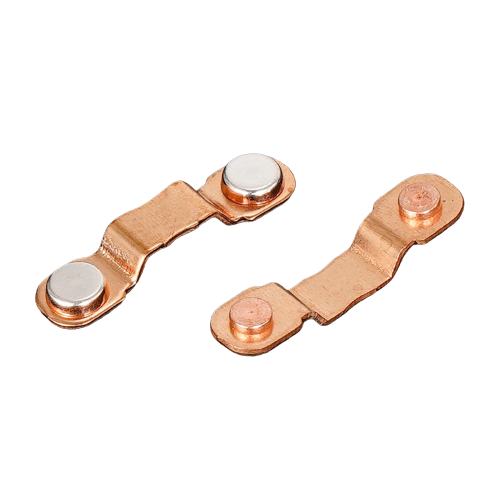
Introduction: Understanding the Issue — Light Switch Stuck Off
Have you ever encountered a situation where your light switch refuses to budge from the off position? This frustrating issue is not only inconvenient but can also be indicative of underlying electrical problems. In this article, we delve into the reasons behind a light switch getting stuck off, emphasizing the critical role of the wall switch mechanism. Whether you’re a DIY enthusiast or simply seeking knowledge, understanding this common problem can save you time and ensure your home’s electrical safety.
The Importance of Wall Switch Mechanism: Key to Stuck In Light Switch
The wall switch mechanism is the heart of a light switch’s operation. It’s what allows the switch to move smoothly and control the lighting effectively. A well-functioning mechanism ensures reliability and longevity, preventing annoying issues like the switch getting stuck.
Common Causes of a Stuck Light Switch: Electrical Installation & Maintenance Insights
Several factors can contribute to a light switch getting stuck, ranging from mechanical wear and tear to electrical faults. Understanding these causes can help you diagnose and address the problem effectively.
Case Study: Bad Mechanism: Identifying the Flaws
Let’s examine a case where a poorly designed or damaged wall switch mechanism led to the switch being stuck off. We’ll explore the design flaws and how they impact the switch’s functionality, providing insights into what to avoid.
Here is an inner picutre of a mediocre design that is not good enough to service a 10-years longevity.
In the middle, there is a slim white piece which moves up and down as clicking on and off positions. The top and bottom white pieces will go down to trigger the electric connection. Problem is, once the iron plate (which helps switch fixed on the wall ,shown on the second picture) go bent, the outside plastic cover cannot reach the slim white piece to click the top and bottom piece. That cause the switch stuck.


Impact on Home Electrical DIY
For DIY enthusiasts, recognizing the signs of a bad mechanism is crucial. It not only aids in repair but also informs better choices when installing or replacing switches.
Case Study: Good Mechanism: Highlighting the Design
Conversely, a well-designed wall switch mechanism can prevent such issues. We’ll detail the characteristics of a good mechanism and how it ensures smooth operation and longevity.
Here is another example of a well-designed switch click mechanism. The middle functioning module is protrudent, and the top and bottom pieces are embeded into the module. Eventhough the iron plate is bending 5mm, the click is still smooth.

Integration in Lighting Control Modules
Good wall switch mechanisms are essential in advanced lighting control modules. Their design and functionality play a pivotal role in the overall performance and reliability of lighting systems.
Troubleshooting Tips: Wall Switch Troubleshooting
If you’re facing a stuck light switch, there are several troubleshooting steps you can follow. We’ll guide you through identifying and addressing common issues related to the wall switch mechanism.
Fixing Light Switch Issues: DIY Repair Steps
For those inclined to tackle the issue themselves, we’ll provide a step-by-step guide on fixing a stuck light switch, emphasizing safety and effectiveness.
Stuck Electrical Switch Solutions
Beyond the typical light switch, other electrical switches can also get stuck. We’ll discuss solutions tailored to different types of switches, ensuring you’re equipped to handle various scenarios.
Preventative Measures: Avoiding Light Control Issues
Prevention is better than cure. Learn how regular maintenance and proper installation can prevent your light switch from getting stuck, saving you from potential headaches and ensuring your home’s electrical system remains in top condition.
While DIY fixes can solve immediate issues, investing in well-engineered switches prevents recurring problems. Our switches feature precision-click mechanisms designed for smooth operation and longevity. Below are recommended models – feel free to contact us for technical specifications or bulk pricing.

Conclusion: Emphasizing Proactive Maintenance
Understanding and maintaining the wall switch mechanism is key to preventing a light switch from getting stuck off. By being proactive, you can ensure the reliability and safety of your home’s electrical system, avoiding unnecessary disruptions and potential hazards.
FAQs:
- What should I do if my light switch is stuck in the off position? ◦ Firstly, ensure your safety by turning off the circuit breaker connected to the switch. Then, check if the switch is tightly screwed to the wall and if there’s any visible damage. Sometimes, debris or paint can cause the switch to stick. If you’re comfortable with basic electrical tasks, you can remove the faceplate and inspect the mechanism. If it appears damaged or worn out, it’s best to replace the switch. If you’re unsure at any point, consult a professional electrician.
- Can a stuck light switch be a sign of a bigger electrical problem? ◦ Yes, it can be. While a stuck switch can be a simple mechanical issue, it might also indicate underlying electrical problems like wiring issues, circuit overloads, or even faults in the electrical panel. If the problem persists after fixing the switch, or if you notice other electrical issues in your home, it’s important to get a comprehensive electrical inspection.
- How often should I check my light switches for potential issues? ◦ It’s a good practice to check your light switches at least once a year as part of your home maintenance routine. Look for signs of wear, unusual resistance when toggling, or any buzzing sounds, which could indicate electrical issues. Regular checks can help you catch and address problems early.
- Are there specific tools needed to fix a stuck light switch? ◦ Basic tools for fixing a light switch include a screwdriver (to remove the faceplate and switch), a voltage tester (to ensure the power is off), and possibly needle-nose pliers for adjusting wires. Always ensure you have the correct type of screwdriver to avoid damaging the screws.
- Can I fix a stuck light switch myself, or should I call a professional? ◦ If you have basic DIY skills and understand electrical safety, you can attempt to fix a simple issue like a stuck switch. However, if the problem involves wiring, feels complex, or if you’re not confident, it’s safer to call a professional electrician. Electrical work can be hazardous if not done correctly.
- How can I tell if my light switch mechanism is good or bad? ◦ A good light switch mechanism should operate smoothly without any grinding or resistance. It should also stay in place firmly and not feel loose. If you hear crackling sounds, feel excessive resistance, or the switch feels wobbly, these could be signs of a bad mechanism. Visual inspection for corrosion or damage can also help determine the condition of the switch mechanism.




